Master Key Endgame Positions
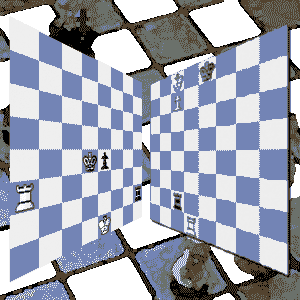
The endgame is where the battle reaches it epic finale. All through the game you struggled for the edge. You battled for the best squares for your pieces.
You fought hard to give them air to breathe so they might threaten the enemy. You fight with every fiber of your soul every time you play chess.
You fought hard to give them air to breathe so they might threaten the enemy. You fight with every fiber of your soul every time you play chess.
You stood toe to toe with your opponent and searched for every opportunity to win some material. The material was inexorably whittled down and the pieces left the board. You schemed and maneuvered to take an edge into the latter stages.
And now it's here. Le jeu final. The stage is set for the final act in this absorbing combat. There are a number of known theoretical positions that you can play for and flawlessly execute. All you need is the technique to master and clinch victory in the dying embers.
Play the Lucena Position Expertly
































































Key Positions - Lucena Position
The Lucena Position is the blueprint to victory for the stronger side in the Rook and pawn vs Rook endgames. A win can be forced if the pawn is on the seventh rank of any file from b to g.
A pawn on the outside file can be shepherded towards promotion but this is entirely dependant on the position. Accurate play from the strongest side should be enough to engineer the Lucena Position.
From there a win can be forced either through the concession of the defending Rook to stop the promotion or Queen plus Rook will defeat Rook.
Saving the Day with the Philidor Position
































































Key Positions - Philidor Position
The Philidor Position is the antidote to the Lucena Position. Or at least if you're defending in a Rook and pawn vs Rook situation it's a way of ensuring that your opponent can't progress to the Lucena Position.
As your opponent can force victory from there, stopping such a situation from emerging is probably a good play! I say that prevention is better than cure any day.
If played in time the weaker side can use this tactic to comfortably hold out for a draw. Along with the Lucena Position, the Philidor Position forms the foundation of Rook and pawn theory.
If played in time the weaker side can use this tactic to comfortably hold out for a draw. Along with the Lucena Position, the Philidor Position forms the foundation of Rook and pawn theory.
Virtually any Rook and pawn ending can be simplified to these positions. Since they are the most common finish they are handy positions to know inside out.
Stop the Rook Pawn with the Vancura Position
































































Key Positions - Vancura Position
The Vancura Position is sometimes found in Rook and pawn vs Rook endgames. It comes into play when the pawn is a Rook pawn on the sixth rank. It is an ingenious device to save the game.
In these types of scenarios, the weaker side will attempt to prevent progress of the pawn by peppering the stronger King with checks. The point is that the only place for the King to hide is in front of the pawn.
This is why the pawn on the sixth rank is so important. There has to be room for the King to go to a7 to set up a winning position. The weaker Rook can prevent this plan by setting up perpetual lateral checks to force the pawn to advance. As soon as this happens he has a drawing position.
Witness the Power of the Outside Passed Pawn
































































Key Positions - Outside Passed Pawn, the g4-pawn will win it for White
There are few things indeed more valuable than an outside passed pawn. The outside passer in the diagram gives White the decisive edge over Black.
Were it not there, the result would depend on opposition, tempi, who has the move when the pawn pushes run out and so on. Such a game might well end in a draw.
But there's no draw here today. The outside passed pawn on g4 is going to pull the Black King out of position and his counterpart will rush in to gobble up the Black pawns. White will win.
The Trouble with the Rook Pawn
































































Key Positions - Looks like White will win but the Black King will never be driven out of the corner so the game will be a draw
There are many concrete rules for concerning central pawns. Plans and methods that guarantee success. But many of these fail safe procedures are useless in Rook pawn endgames which have rules of their own.
Here is just one vivid example. The weaker King has many more defensive resources than he would have in the center of the board. You can imagine if this was going on in the e-file, with a timely Ba4! the Black King would be simply brushed aside.
But this is happening on the edge of the board. White has no room to maneuver on the other side of the pawn. The Bishop also stands on the wrong color square and is ineffective. The defending King will not be dislodged and the game is drawn.
Things Get Dicey in Pawn Endgames
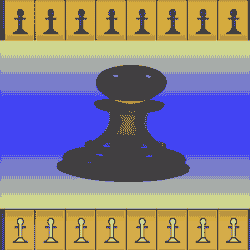
The pawn endgame is chess stripped down to it's most basic form. Sometimes it is pure mathematics and systematic, brute force calculations are the order of the day. It can at times be nothing more than a race to promotion.
But there are other kinds. They are surprisingly complex with many of these positions difficult to play even for top masters. These endings are packed with themes and concepts for you to master.
You've got doubled pawns, isolated pawns, passed pawns, outside pawns, outside passed pawns, frozen pawns and much more besides. Getting comfortable in these endings is vital as the others are add-ons. This genre represents the foundation.
The Queen's Coup de Grace

The Queens, more often than not, don't survive into the latter stages. Usually one player or the other will find it advantageous to force a trade. But it's by no means rare to see the Queens on the board for the conclusion.
The Queen's duties will depend on the other actors and how the position has panned out. She may be called into defensive duty to hold up the progress of an advanced pawn.
She may be in attack as part of a mating net. Or she could be up against an enemy Queen with some pawns involved. Sometimes you will see a Queen vs Rook or Queen vs two Rooks ending.
She may be in attack as part of a mating net. Or she could be up against an enemy Queen with some pawns involved. Sometimes you will see a Queen vs Rook or Queen vs two Rooks ending.
Sometimes a Queen will have to slug it out with a number of minor pieces. Endings such as these are always finely balanced with one powerful figure up against weaker foes who have, however, an advantage in numbers.
Clash of the Heavies - Rook vs Rook
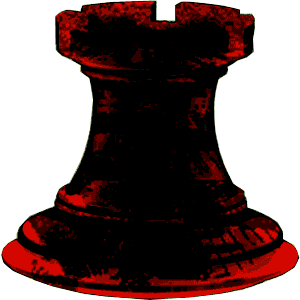
Rooks often find themselves in the thick of the closing stages, accounting for the lion's share of all chess endgames. This is a vast field in itself and a richly rewarding one if you do some study.
The Lucena Position and the Philidor Position are your starting points while everything tends to flow from there. You will use your Rook to try to limit the enemy King's influence on the battle. This can be done by forcing him to defend his rear pawn. Your Rook will be trying to take command of key ranks or files.
One of the keys to playing these positions is getting the more active Rook. Activity is as ever crucial to success. A passive Rook is the first step on the road to defeat.
Wars of the Minor Pieces
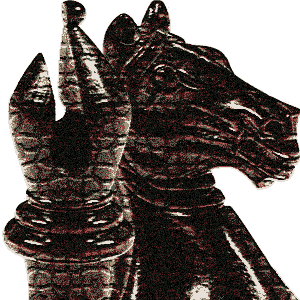
Minor piece endgames are a diverse category. You have Bishops of opposite colors, Bishops of same colors. You have all sorts of permutations that you could think of involving either one or two Bishops or Knights for either side.
Just think of the complexity that different pawn structure configurations can add to the mix. You need a wide range of techniques and skills for these endings.
Learning to handle your Bishops and Knights with composure and verve can make you a formidable player. These types of endings have seen some of the most exciting finishes in chess history.
The Pawnless Finish of the Irregulars

Irregular endgames are the ones that don't involve pawns. These endings do not materialize often as the term irregular would suggest. Usually a few of the foot soldiers would survive the officers in the rough and tumble of a chess game.
The main focus here is the ability to handle pieces in the wide open expanse of a chess board completely uninhabited by pawns. Rooks, Bishops and Queens have the opportunity to exercise their powers to the fullest extent on open straights and diagonals.
These types of endings often don't favor the Knight so much. Kings must also watch their step if powerful enemy pieces are still around.
Build a Chess Fortress to Stay Alive
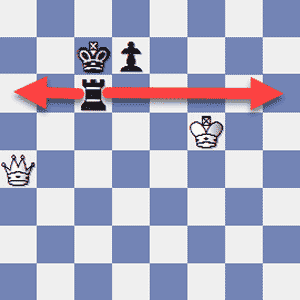
Endgame - It's a Chess Fortress as the Attacking King can never enter the enemy camp
Sometimes you come to the endgame and you're just down in material. You're just trying to hold on for a draw. It's not always easy when your opponent has more firepower.
Things usually look (and feel) bad when you're on the wrong side of a Queen vs Rook endgame. There can be a way to save it though. Remember the King and Queen must both take part in any mating attack.
This means we can stop a mating attack from ever happening if we can stop the enemy King from approaching our King. If we can build an impenetrable wall with the Rook, we're set for the half point.
Moving On

The stakes are never higher than right at the end. Many of the greatest chess masters throughout history are feted as deadly endgame players. Their accuracy during this phase would often be reputed to be close to unerring.
Becoming a great endgame player is not down to divine genius. Specific themes and techniques that can be learned through study and perfected through play are most in demand. They say the endgame must be played like a machine. It is a discipline that can be largely learned and then honed.
Endgames are also categorized by material. You can have a Rook vs Knight endgame or Opposite Colored Bishops. There are all sorts of finishes that you can find yourself in. Excel in these Material Face-offs.

